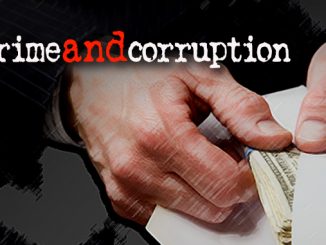
By Mark Anderson
Due to the drama surrounding the 2020 general election—fostered by an unhinged Covid-19 crackdown that the authorities leveraged in order to encourage extensive mail-in balloting—irregularities and various unlawful actions inevitably arose, including the apparent swapping of fake for real ballots. [See the related story on page 27 of this edition—Ed.] On-site vote watchers were in many instances prevented from standing close enough to the vote-counting machines, etc.
At long last the electronic voting machine companies, after selling their spiffy contraptions to county election officials without a major hitch for decades, have finally started to come under the scrutiny they deserve. Calls for greater scrutiny aren’t coming only from conservatives. Writers such as attorney and self-described election integrity activist Stephanie Cohn are starting to sound the alarm on a decades-old private vote-counting syndicate—while naming other suspect companies besides the oft-mentioned Dominion. Furthermore, it’s becoming clearer that politicians may talk a good talk about election honesty, but most of them have a curious knack for preventing election integrity from advancing.
In an article posted at “Medium.com” entitled “America’s largest (and arguably most problematic) voting machine vendor is ES&S, not Dominion Voting,” Ms. Cohn, who also has detailed the myriad problems of electronic voting in the New York Times Review of Books and other mainstream media outlets noted:
Republicans have directed their belated election-security ire almost exclusively at Dominion Voting. They have conspicuously given short shrift to America’s largest and arguably most corrupt voting machine vendor, Election Systems & Software, LLC (ES&S), whose systems in Texas had a software “bug” as of September 2020 that could in theory have enabled ES&S or others to install unauthorized software. (For unknown reasons, the Texas Secretary of State waited until December to post the September report.) The GOP’s cherry picking is dangerous because it could give ES&S even more corrupt control over U.S. elections than it currently has. . . . The GOP’s apparent blind spot for problems involving ES&S is curious. Before the GOP began screaming “Dominion, Dominion, Dominion,” most of the negative press about the elections industry in the U.S. had for years focused on ES&S. And for good reason.
Ms. Cohn, whose shaky thesis is that election fraud is largely a Republican, conservative, and even a “religious right” enterprise—as opposed to the correct answer, which is that it’s a globalist racket involving both Republicans and Democrats—nevertheless goes on to importantly point out:
In 2007, a team of researchers at the University of Pennsylvania Department of Computer Science found “numerous exploitable vulnerabilities in nearly every component” of ES&S’s optical scanners (for counting paper ballots) and direct record electronic (DRE, usually touchscreen) voting machines.
The same year, Jennifer Brunner (D), who was Ohio’s secretary of state at the time, commissioned an analysis called the Everest Report, which also found significant vulnerabilities in ES&S systems. The report concluded that those vulnerabilities “demonstrate the capability for attackers to execute arbitrary code on many of the components given access to them. Further, specific scenarios were identified where attackers who successfully gained access to the systems and exploited identified vulnerabilities could likely impact the results of elections.”
Ms. Cohn went on to note that, since 2013:
ES&S has donated $30,000 to the Republican State Leadership Committee (RSLC) whose mission is to elect Republicans to state office. It may also have donated to the Democratic corollary of RSLC, but I’ve been unable to confirm this. A few years ago, ES&S donated to Senate Majority Leader Mitch McConnell (R), who then killed proposed election-security legislation. . . . ES&S has also provided secret donations and other gifts to state and county election officials who, in the past few years, have then chosen ES&S’s insecure new touchscreen systems for use by most in-person voters.
However, Ms. Cohn evidently has reported little, if any, about the highly secret source codes used inside electronic voting machines. As election-fraud veteran Jim Condit Jr., among others, has exhaustively pointed out, external hacking via the internet is redundant if the code owned by the companies can flip an election without outside interference. That code is jealously protected, even when it’s demanded in a lawsuit. Hopefully, as 2021 progresses, there will be much more in-depth, consistent and truthful reporting on not just Dominion, but also on ES&S and the third of the “big three,” Hart InterCivic of Austin, Texas. Americans also need much more information on the nature of their source codes and other technical and political machinations. Whether we have elections worth calling elections anymore depends on it.

The Cybersecurity Infrastructure Security Agency (CISA), which operates under the Department of Homeland Security, posted a late-2020 report by the Election Infrastructure Government Coordinating Council, which stated: “The Nov. 3 election was the most secure in American history.” The membership of that council, besides the U.S. Election Assistance Commission, the National Association of Secretaries of State, Democracy Works, and the National Association of State Election Directors, included ES&S and Hart InterCivic, the last of which proudly posted the same statement on its website.
But a question remains: “most secure” for whom?
Mark Anderson is AFP’s roving editor. Email him at [email protected].






